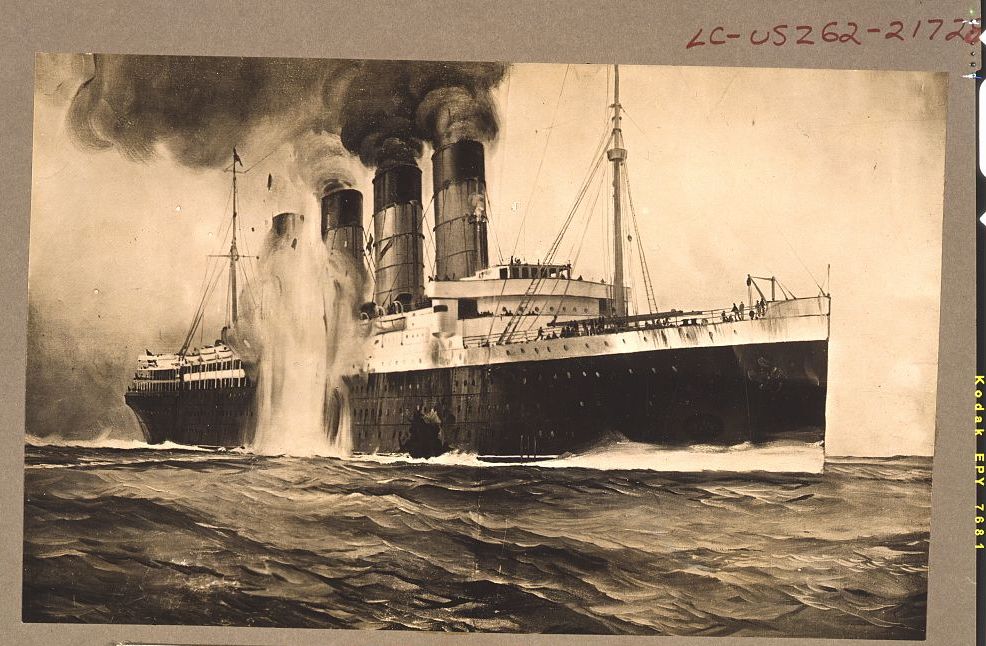The Sinking of the Lusitania

Launched by the Cunard Line in 1906 the nearly 800-foot long ocean liner was comprised of 9 passenger decks housing a maximum of 2,198 passengers along with 850 crew members.
It would be the first ship of the Cunard Line’s four-funneled grand trio of ships, which would soon include the RMS Mauretania and the RMS Aquitania.
On May 7th, 1915, amidst some of the worst early combat of the First World War, the RMS Lusitania was sunk by a German U-boat. Of the 2,000 men, women and children aboard, 1,200 would perish after the torpedo found its mark. Arguably one of the most luxurious vessels in the age of passenger ships, the Lusitania sank in less than eighteen minutes after the German torpedo struck its hull.
The vessel went down in 300 feet of water, 11 miles off the southern coast of Ireland. The backlash following the sinking turned public opinion in many countries against the Huns, contributing greatly to the United States entry into the war.
Arguments over whether the ship was a legitimate military target raged back and forth throughout the remainder of the war, as both sides made misleading claims about the ship. The Germans justified categorizing the Lusitania as a naval vessel since, at the time of her sinking, the Lusitania indeed carried over 4 million rounds of small-arms ammunition, nearly 5,000 shrapnel shell casings and 3,240 brass percussion fuses.
The Germans further argued that the Lusitania, like many British merchant ships, routinely violated the internationally recognized cruiser rules, which forbade attacks on civilian ocean liners and non-military merchant ships.
